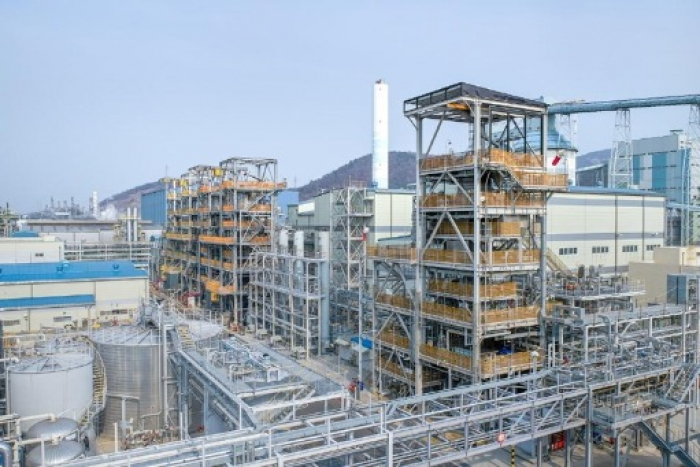LG Chem Ltd., the top chemicals company in South Korea, said on Wednesday it broke ground on
the country’s largest plant to produce carbon nanotubes (CNT), advanced materials that enhance the electric and thermal conductivity and tensile strength of electric vehicle batteries.
The fourth plant, based in Daesan about 150 kilometers southwest of Seoul, will manufacture 3,500 tons of the materials per year from 2025 and supply them to affiliate LG Energy Solution Ltd. and other battery makers.
LG Chem’s third local plant produces 1,200 tons of CNTs, while the first and second factories’ output amounts to 1,700 tons in aggregate. The existing facilities are located in Yeosu, about 390 kilometers south of the capital.
The chemicals maker is aiming to capture the global CNT market, which is widely used for batteries, conductive paints and surface heating elements. The material has very high heat conductivity, comparable to that of diamond crystal and copper, and can be more than 100 times stronger than steel.
CNTs are capable of more than 10% higher electrical conductivity, compared with carbon black, which is commonly used for cathode production. The advanced material also helps increase the volume of cathodes in batteries, thus extending cell capacity and lifespan.
LG Chem formed a dedicated team in January of this year to develop the use of the materials, while expanding sales in EV batteries and other sectors.
"With the largest CNT production capacity in Korea, we will build on our competitive edge in the battery material industry and proactively explore new markets with great potential," said Noh Kook-rae, head of the petrochemical business division at LG Chem.
The global CNT market size was valued at $38.5 billion in 2022 and is forecast to expand to $105 billion by 2030, with a compound annual growth rate of 13.4%, according to Precedence Research.
Write to Mi-Sun Kang at
misunny@hankyung.com
Jihyun Kim edited this article.




